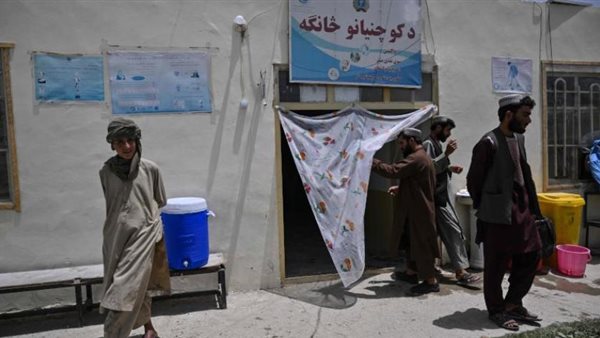This month marks one year since the Taliban came to power in Afghanistan. Although it is not the first time they have seized power – they took control of the country between 1996 and 2001 – it is the most symbolic since it ended twenty years of international intervention to defeat them.
These efforts faded within a week, the time it took for the Taliban to occupy the entire country in an offensive that captured all the provincial capitals, culminating in their entry into Kabul on August 15. A year later, there are still people, as seen last week in Spain with the arrival of 294 Afghans and their families who cooperated with Spanish forces.
A year later, the situation did not improve but worsened under the Taliban. Although there is no war in the country, the terrorist threat still exists in Greater Khorasan, which, paradoxically, is attacking the Taliban, who for years sowed the same panic they are now suffering from. The Afghan branch has been adept at diversifying its terrorist tactics from suicide attacks to cause maximum harm against civilians in October, to suicide operations against individuals, as seen this month with the killing of a suicide bomber with explosives in a prosthetic leg. The bombing of a mosque in Kabul this week. The existence of the Taliban’s failed attempts to eliminate it raises serious questions about Afghanistan’s stability, particularly the fear of their control of the country in the medium to long term.
The decline of women’s rights
Women’s rights declined. Although the Taliban promised early in their rule that they would not be as cruel to women as they were the last time they came to power, they have proven otherwise. Women are required to wear a burqa, travel with a male escort, and although promised otherwise, the door to women’s education has been closed. Such measures have led to an increase in selling girls for marriage, a common practice in the country that is likely to continue due to the deteriorating economy of Afghanistan, as selling girls for marriage is a way to earn money for many families. This practice and the Taliban’s refusal to guarantee women’s rights isolate them from the international community, thus preventing the country from obtaining the funds and humanitarian aid it needs to improve the lives of its citizens.
Humanitarian and economic aid is paralyzed. The $9 billion in foreign reserves of the Central Bank of Afghanistan has not been released. Their release is conditional on the international community’s recognition of the Taliban government, which is highly unlikely, as the Taliban cannot be trusted to run the country. However, such rejection exacerbates the humanitarian situation in a country that has been heavily dependent on international aid for its livelihood.
Humanitarian aid paralysis
Two natural disasters this year have also complicated the situation: one of the worst droughts in recent years has put the food supply of nearly 20 million Afghans at risk, and in June a 4.5-magnitude earthquake hit the east of the country, a remote region.. So far, we don’t know what. If humanitarian aid has reached the affected area, although it is very likely that it has not.
Finally, the killing of al-Qaeda leader Ayman al-Zawahiri last month by a US drone in Kabul raises questions about the possibility that terrorist groups are using Afghanistan as a haven, something the Taliban promised not to do when they signed the Doha agreement in 2020. Such suspicions are sure to exacerbate The international isolation of the country, which exacerbates the humanitarian situation. Further US drone strikes against al-Qaeda figures on Afghan soil will only lead to questioning the Taliban’s credibility in fulfilling its obligations, which is currently questionable. The dilemma is exacerbated by the fact that the international community will not intervene to prevent al-Qaeda from strengthening in Afghanistan, with the country potentially once again becoming a haven for terrorist groups, according to industry watchers.
The terrorist threat continues
A year after the Taliban came to power, the situation in the country has worsened. The terrorist threat continues through the movement in Greater Khorasan, which is sowing terror in the country through attacks on public figures and institutions. Women’s rights declined, with an increase in the forced sale of arranged marriages by minors. This contributes to further isolation of the country, which urgently needs the reserves of the Central Bank of Afghanistan to get its economy back on track, especially this year as the country suffers from drought and the effects of the earthquake. Finally, the death of the al-Qaeda leader in Kabul raises doubts about the Taliban’s ability to live up to its commitments, as it has pledged to make Afghanistan a country free of terrorist groups. If more al-Qaeda figures are discovered in the country, the international isolation is likely to intensify.

